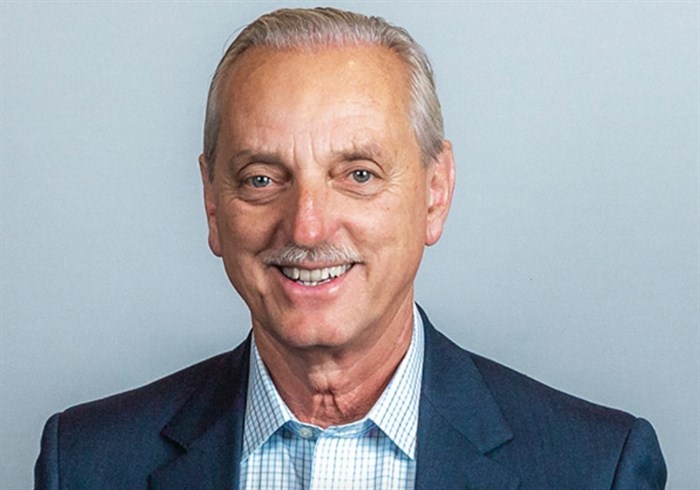
Helmut Pastrick, chief economist for Central 1 Credit Union
Image Credit: Submitted/Central 1 Credit Union
December 09, 2020 - 7:00 AM
Tired of being shut in at home unable or unwilling to travel, shop or dine out? Just take a look at your savings account — there's a better-than-even chance that might cheer you up.
While some specific industries, businesses and employees have taken the brunt of the losses through the pandemic, evidence is mounting that for many of the remainder, they've prospered through the pandemic, Helmut Pastrick, chief economist for Central 1 Credit Union, told iNFOnews.ca.
“The numbers that came out for the second quarter of 2020 showed a very large increase in household savings, something on the order of $90 billion in one quarter,” he said. “That was driven by a drop in consumption for those who were working, which was obviously the majority. Their spending dropped because of the restrictions on movement, on a lack of confidence about contracting the virus.”
There is no question that the pandemic has hit people unequally, he noted.
“Those middle to lower wage earners who lost their jobs, they probably ran down their savings,” Pastrick said. “They didn’t increase their savings and certainly CERB and those related programs helped but, I suspect, most of that money went into spending, whether it’s on food, on shelter, etc.”

Most planes were parked on the ground during much of the year.
(JENNIFER STAHN / iNFOnews.ca)
That’s backed up by a number of surveys that show between 30 and 45 per cent of people saw their incomes decline because of COVID. One study, by the Canadian Professional Accountants association, found 60 per cent of respondents were untouched financially by the pandemic and seven per cent actually gained financially.
READ MORE: Are you financially prepared for another year under the pandemic?
That’s not to downplay the harsh reality faced by those who have lost their jobs, particularly young people and women.
The Chartered Professional Accountants of British Columbia, in a recent editorial, noted that, as the pandemic took off last spring, one third of young workers aged 15 to 24 were unemployed. While that’s improved, their unemployment rate was 15.6 per cent in October, almost twice the rate for the province as a whole.
The toll this takes on mental health is real as the Central Okanagan Mental Health Association is now seeing its online counselling sessions being fully booked.
“Our counsellor is actually seeing a significant number of individuals coming back for that extra service, so what that tells us is people need help on this cascading effect of COVID-19,” Jessica Samuels, communications and events manager for the association told iNFOnews.ca.
READ MORE: Men, women, children in the Southern Interior experiencing high stress during pandemic
That being said, there’s still lots of good news out there.
Food banks and credit counselling societies have seen their client bases go down.
READ MORE: Food banks in Kamloops, Okanagan bursting with food heading into Christmas
The number of people taking out business licences in the Okanagan has gone up while real estate is booming and car sales are regaining lost ground.
READ MORE: COVID isn’t ravaging the spirits of new entrepreneurs in the Southern Interior
Even municipalities have been given money by senior governments that more than covers any loss in revenues when facilities were shut down.
READ MORE: Local governments in the Southern Interior are getting more than $50 million in COVID-19 grants
Those who were working were not out travelling, putting gas in their cars or buying new clothes. Instead, they were putting money away as the savings rate jumped about 28 per cent in the second quarter of the year, Pastrick said.
With the lockdown making a partial return as the second wave of COVID-19 hits B.C. and the world, those savings are likely to build although it will be a tough winter for those who are hardest hit.
Pastrick sees the economy picking up as 2021 progresses.
“I would certainly look for 2022 where we’ll be mostly clear of this,” Pastrick said. “There will be a period of much stronger growth. There’s a lot of pent-up demand and, with these high levels of savings, I expect those to be run down and basically spent, in large part, so that should result in some very good economic numbers in ‘22 and ‘23.”

COVID-19 pandemic shuts Okanagan Rail Trail parking lot.
(BEN BULMER / iNFOnews.ca)
With interest rates expected to stay at or near record lows possibly into 2024, that’s good news for the economy and for getting people back to work.
But that doesn’t necessarily mean that everyone will share equally in the recovery, just as the pain has not been equally felt.
“In general, income and wealth inequality has increased during this period,” Pastrick said. “It was increasing prior. The trend was there in the two to three decades prior but this is really a widening (the gap).”
Others have stated it even stronger.
“Throughout this process, the rich have gotten richer,” Trevor Perepolkin, senior investment advisor with HollisWealth in Vernon told iNFOnews.ca.
READ MORE: Are you financially prepared for another year under the pandemic?
He was referring to major corporations like Amazon and Facebook but the rich in Canada have done just fine as well.
“During the pandemic, the wealth of Canada’s top 44 billionaires has surged by more than $50 billion — by 28% — over the six months from early April to October,” states a news release from Canadians for Tax Fairness, citing wealth numbers tabulated daily by Forbes magazine.
Only one of those billionaires lost wealth, the release said.
Another report, from the Organization for Economic Cooperation and Development (OECD), cited in a Globe and Mail article, said the per capita income of Canadian households rose 11 per cent from the first three months of the pandemic through the second three months (April, May and June when the lockdown hit hardest).
The article suggests that’s because the federal government overpaid people through support payments like CERB where part-time workers qualified for the full $500 per week payment even if that was more than they normally earned.
Recent data from Statistics Canada show that, while the economy took a hit this year, it’s making a significant recovery.
The number and value of auto sales in September was actually higher than in September 2019.
Of course, that’s tempered by the huge drop in sales earlier in the year. That means the total number of vehicles sold in Canada was down by almost 400,000 by the end of September and the value was down by $15 million on total sales for 2019 of about $85 million.
On the employment front, the Thompson-Okanagan showed a 7.4 per cent unemployment rate in November. That’s an improvement from earlier in the pandemic when it hit 10.3 per cent in June and July but is almost double the 4.7 per cent recorded in November 2019.
Kelowna’s unemployment rate in November was the second lowest in the country at 4.7 per cent. That’s not much different than the 3.8 per cent in November 2019.
Along with higher unemployment, the actual hours worked at a person’s main job dropped from about 626,000 in Canada last year to 457,000 in April of 2020. It only climbed back to 598,000 in September.
The travel industry is one that has been hammered the hardest by the pandemic. Last year, about 2.7 million foreign travellers entered Canada in both April and September. This year, that dropped to 112,454 in April and only added about 12,000 more in September.
As for Canadians returning from abroad, there used to be about 4.6 million such travellers a month. That dropped to 162,000 in April and 343,000 in September which, of course, means they weren’t spending their money outside of Canada.
But people are still shopping.
According to Statistics Canada, retail sales in Canada, last year, were around $51 billion per month. That dropped to $35.4 billion in April of this year but climbed to $54.9 billion in September.
For B.C. a normal month used to be around $7.2 billion. That dropped to $5.7 billion in April but bounced back to $7.8 billion in September.
One sector that has done very well is real estate, where the number of sales in the Okanagan Mainline region was up almost 17 per cent and the value of those sales was up 31.5 per cent.
In the Kamloops region, the number of sales actually dropped by 2.3 per cent (51 units) but the value was up slightly.
But, while there is some good news on the horizon, the reality is that Canada’s decent economic record during the pandemic comes at a huge cost.
The B.C. government had forecast its 2020-21 fiscal year would end March 31 with a $274 surplus. COVID-19 changed that to a deficit of $321 million, although that included a $298 million ICBC investment loss due to market conditions at that time, according to an Aug. 31 government summary of the fiscal year.
Looking ahead, a Sept. 10 government forecast predicted a 2020-21 deficit of $12.8 billion.
The federal government’s deficit is heading towards $400 million.
So, does that mean economic recovery will come with big tax hikes?
Not necessarily, Pastrick said.
“The best remedy for deficits is economic growth generating tax revenue,” Pastrick said.
To contact a reporter for this story, email Rob Munro or call 250-808-0143 or email the editor. You can also submit photos, videos or news tips to the newsroom and be entered to win a monthly prize draw.
We welcome your comments and opinions on our stories but play nice. We won't censor or delete comments unless they contain off-topic statements or links, unnecessary vulgarity, false facts, spam or obviously fake profiles. If you have any concerns about what you see in comments, email the editor in the link above.
News from © iNFOnews, 2020